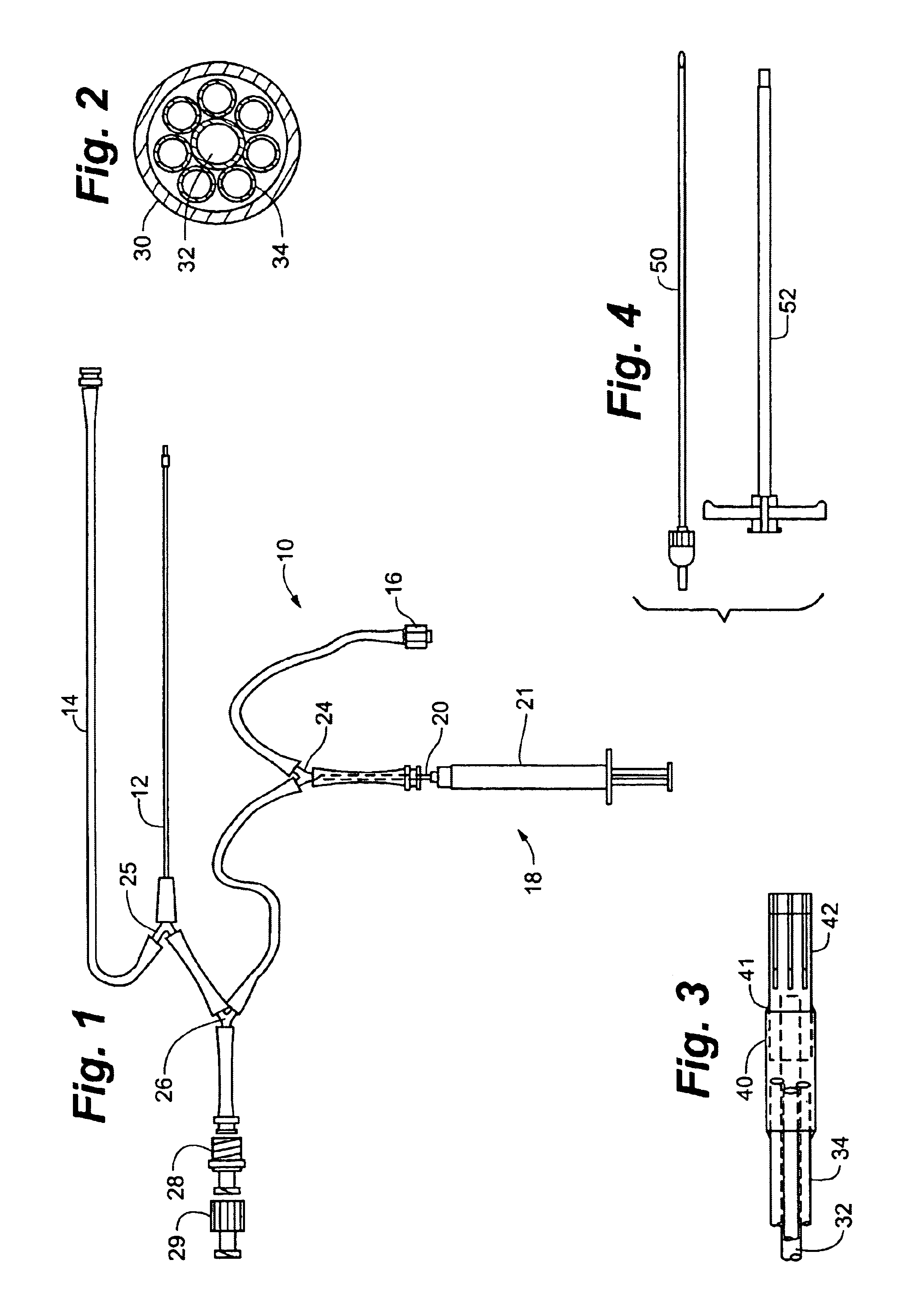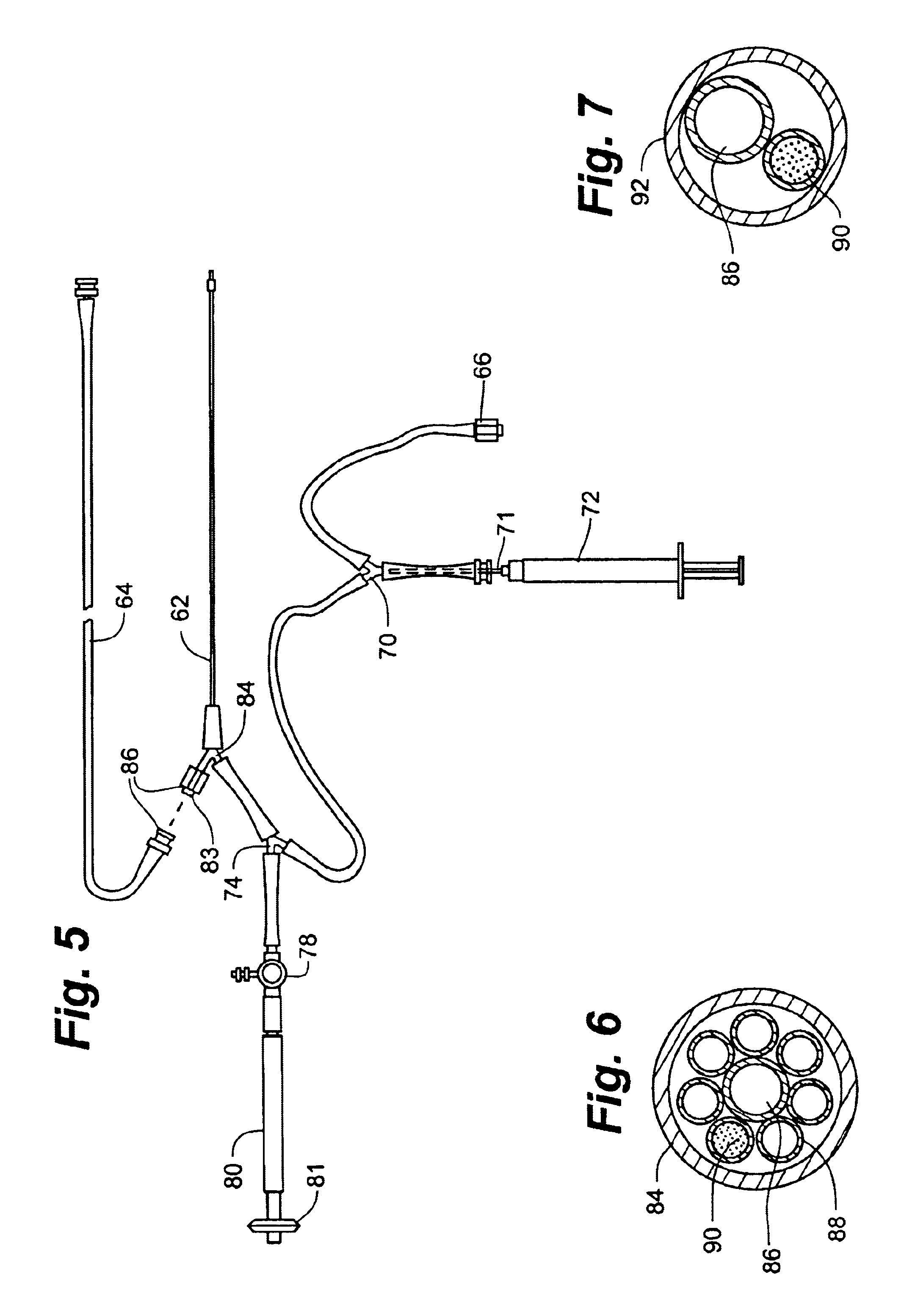System for treating tissue swelling
a tissue swelling and tissue technology, applied in the field of tissue swelling treatment systems, can solve the problems of limited efficacy, increased tissue pressure and necrosis of muscle and nerves, conventional treatment options, etc., and achieve the effects of increasing serum sodium concentrations, low plasma turnover, and increasing serum sodium levels
- Summary
- Abstract
- Description
- Claims
- Application Information
AI Technical Summary
Benefits of technology
Problems solved by technology
Method used
Image
Examples
example 1
[0235]Initial studies were performed to demonstrate that WRT removes water in the vapor phase and not in the liquid (bulk) phase.
[0236]WRT cartridges were made by potting hollow fibers in plastic tubing, in the configuration shown in FIG. 27. The tube material was typically polycarbonate with nominal dimensions of 60 mm in length and 8 mm I.D. After potting, exposed length of fibers was 4.5-5 mm. Various numbers of fibers in any particular cartridge were examined. Side ports were attached to the tubing in order to allow either air or fluid flow along the outside of the fibers.
[0237]A fluid loop was attached to the side ports while desiccated air was passed through the hollow fiber lumens. Initial tests examined various fiber types / manufacturers and the ability to remove water vapor from an electrolyte solution in a flowing loop. After removing water vapor, the solution was examined for concentrated electrolytes (sodium, potassium and chloride). The electrolyte levels in the concentr...
example 2
[0241]WRT and other methods can be used singly or in various combinations. Each combination will have specific affects on three independent parameters; 1) rate of solute flux, 2) effluent concentrations solutes, and 3) rate of water flux. These relationships can be quantified by mass balance formulas.
[0242]Two methods are currently used to treat fluid overload: ultrafiltration, and combination ultrafiltration and reinfusion of replacement fluid. Both result in a net removal of water. The combination treatment can accomplish net removal of water by removing more plasma (ultrafiltration) than is replaced with reinfused saline.
[0243]A comparison of WRT with UF, reinfusion, and combinations of UF and reinfusion are shown in the figure. Each data point on the line represents an increase in fluid transfer. Reinfusion alone results in an increase of sodium and plasma volume. A one to one combination of reinfusion and UF results also results in an increase in sodium, but no change in plasma...
example 3
[0248]Efficacy of WRT can be confirmed with in vivo studies. These studies are designed to test water removal by extracoporeal WRT in normal, non-injured animals. Replacement fluids are provided to maintain fluid homeostasis.
Design Outline for Short-Term Study:
[0249]1. Induce general anesthesia.[0250]2. Femoral artery and vein is cannulated.[0251]3. Bladder is cannulated with suprapubic catheter.[0252]4. Serum and urinary samples are taken.[0253]5. Begin circulation.[0254]6. After six hours, serum and urine samples are taken.[0255]7. The animal is euthanized.
Design Outline for Long-Term Study:[0256]1. Induce general anesthesia.[0257]2. Femoral artery and vein is cannulated.[0258]3. Bladder is cannulated with suprapubic catheter.[0259]4. Serum and urinary samples is taken.[0260]5. Begin extracorporeal circulation.[0261]6. After six hours, serum and urine samples are taken and the animal is allowed to recover.[0262]7. At twenty four hours the animal is anesthetized again, serum and ur...
PUM
| Property | Measurement | Unit |
|---|---|---|
| length | aaaaa | aaaaa |
| length | aaaaa | aaaaa |
| length | aaaaa | aaaaa |
Abstract
Description
Claims
Application Information
 Login to View More
Login to View More - R&D
- Intellectual Property
- Life Sciences
- Materials
- Tech Scout
- Unparalleled Data Quality
- Higher Quality Content
- 60% Fewer Hallucinations
Browse by: Latest US Patents, China's latest patents, Technical Efficacy Thesaurus, Application Domain, Technology Topic, Popular Technical Reports.
© 2025 PatSnap. All rights reserved.Legal|Privacy policy|Modern Slavery Act Transparency Statement|Sitemap|About US| Contact US: help@patsnap.com



